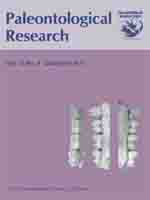A total of 145 ostracode taxa were obtained from the upper part of the Plio—Pleistocene Takanabe Formation, Miyazaki Group, in the northern part of the Miyazaki Plain, Southwest Japan. Most of the assemblages are extant temperate and subtropical water species that have been reported from the recent western North Pacific Ocean around Southwest Japan, the Tsushima Strait, and the shelves off China. Four ostracode bioassociations (UA, MA, LA, and DA) and two biofacies (SF and DF) were discriminated on the basis of Rand Q-mode cluster analyses. Biofacies SF is divided into six sub-biofacies (SF1–6). The results revealed at least two transgressions and one regression during the deposition of the upper part of the Takanabe Formation. The sea-level fluctuation at approximately 2.6 Ma inferred in this study is extremely large compared with the glacio-eustatic sea-level fluctuations during the late Pliocene to early Pleistocene, suggesting that local tectonic movement in the study site during the deposition of the upper part of the studied interval at ∼2.6 Ma may have led to the large sea-level fluctuation. This paper also includes descriptions of two new species, Acanthocythereis abei sp. nov. and Acanthocythereis takanabensis sp. nov.
How to translate text using browser tools
1 December 2011
Temporal Changes of Plio—Pleistocene Ostracoda from the Takanabe Formation, Miyazaki Group, Southwest Japan
Hokuto Iwatani,
Toshiaki Irizuki,
Takashi Goto
ACCESS THE FULL ARTICLE

Paleontological Research
Vol. 15 • No. 4
December 2011
Vol. 15 • No. 4
December 2011
cluster analysis
Kuroshio current
Ostracoda
Plio-Pleistocene
Takanabe Formation




